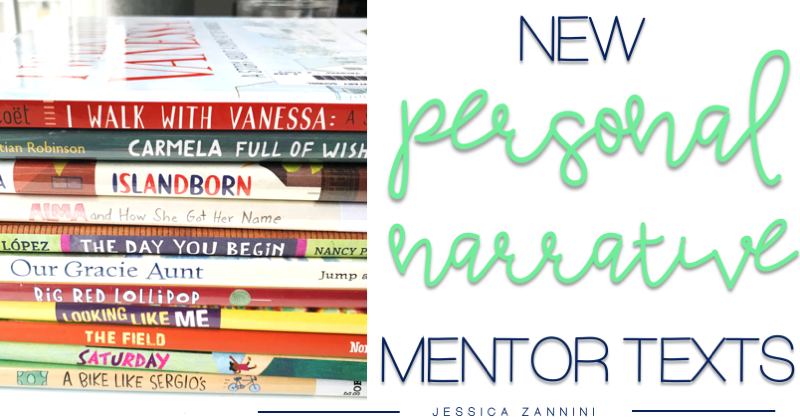
Personal Narratives are a big standard in writing for all grade levels. Students learn to pick a small moment and write about their lives. Each year, students write personal narratives that build on skills learned in previous years.
There are many great personal narrative mentor texts, however, we need a variety of personal narrative mentor texts in order to relate to the lives of the children in our community. Here are 20 new and diverse personal narrative mentor texts to engage students, connect to their lives, and spark writing abilities.
Read on or watch this video to learn about these personal narrative mentor texts.
Picture Book Personal Narrative Mentor Texts
*** Please note this post contains Amazon Affiliate Links. Read more about this on the Contact/Terms of Use page. Click the pink letters to be directed to Amazon.
Woodson, Jaqueline. The Day You Begin. New York, NY. Nancy Paulsen Books.

The Day You Begin tells about overcoming fears and being true to yourself. Children from different backgrounds describe how they feel different. From spending the summer babysitting a sister, to new schools, to different lunches, this book shows that our differences connect us and make us better.
Boelts, M. (2016). A Bike Like Sergio’s. Somerville, MA: Candlewick
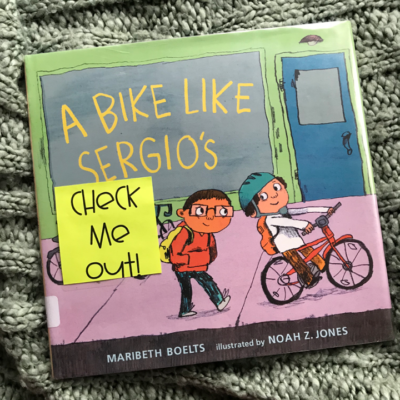
Ruben’s birthday is approaching and he wants nothing more than a bike like his friend Sergio. On a trip to the grocery store he finds $100 and realizes that now is the chance to get that bike. He must decide which is more important – getting that bike or returning the money to the owner.
- Suggested Classroom Use – This is a great book to pair with A Dog Wearing Shoes (see below) by Ko. Both of these books deal with finding something and the dilemma of keeping the items or returning them. Use a Venn Diagram to compare and contrast these two stories. This is a great connection to get kids thinking about writing their own small moment about finding something.
Ko, S. (2015). A Dog Wearing Shoes. Toronto, ON, Canada: Schwartz and Wade.
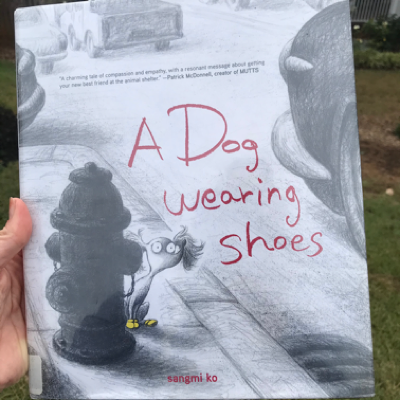
A fabulous story about a girl who finds a lost dog. She wants so badly to keep the dog, but soon learns what it’s like to lose something that you love. A great story to connect with readers about getting and losing pets. (See #2 Suggested Classroom Use)
4. Crown
Barnes, Derrick (2017). Crown: An Ode to the Fresh Cut. Evanston, Illinois: Agate Bolden.
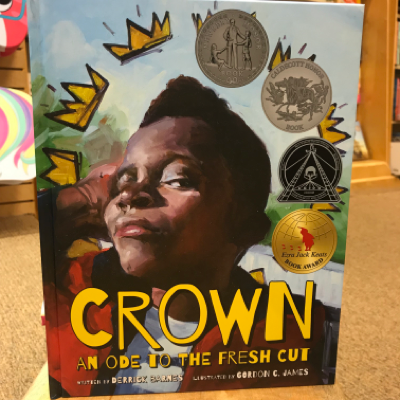
A trip to the barber shop. A young boy gets a new cut and describes the styles of the men around him. A great look at the confidence gained from getting a fresh cut.
Diaz, Junot. (2018). Islandborn. New York, NY. Dial.

Islandborn is another selection that has both an English and Spanish version. This story tells of Lola’s journey to learn about the country where she was born. Her teacher gives an assignment that challenges her to learn about a country that she barely remembers.
- Suggested Classroom Use: Use this book at the beginning of the school year. Have students create their own windows that show an important memory from their past. These windows can be a display all alone or used with the personal narratives they write.
De La Pena, Matt (2018). Carmela Full of Wishes. New York, NY. G. P. Putnam’s Sons.

It is Carmela’s birthday and she is finally old enough to join her older brother on his daily outings. She learns that dandelions are for wishes and before she can make her wish, she falls and the wish floats away. Her older brother shows her a way to still make a wish.
Kerascoët. (2018). I Walk With Vanessa. Toronto, ON, Canada: Schwartz and Wade.

No words are needed to tell this story. I Walk With Vanessa is a story about a new girl who is bullied on the way home from school. Another girl sees this and soon asks Vanessa to walk to school with her. A great story about friendship.
- Suggested Classroom Use: This wordless book is a great story to use to model writing a personal narrative. The class or small group can use the pictures to write what happens at each stage of the story.
Oge, M. (2019). Saturdays. New York, NY: Little Brown Books for Young Readers.
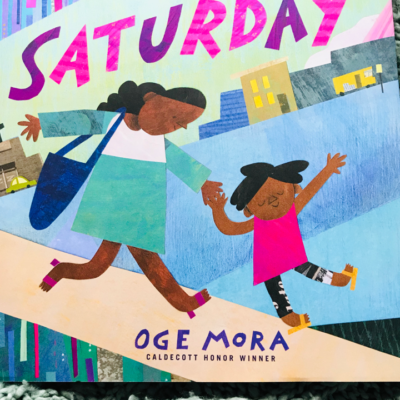
Saturdays are full of fun, but this Saturday everything goes wrong. Sometimes we need a reminder that it’s not the things we do, but the time together that is the most important.
Paul, B. Illus. by Jacqueline Alcantara. (2018). The Field. New York, NY: North South Books.
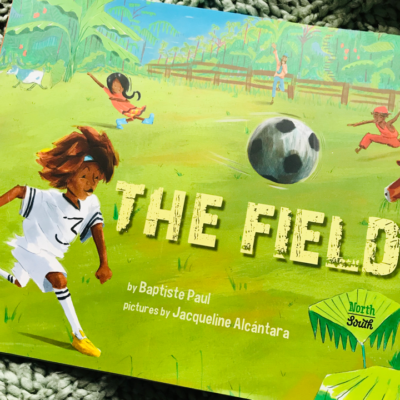
Young friends join a pickup soccer game in the field. They play in the sun, they play in the rain. Nothing stops them but the calls of their mamas at the end of the day.
Woodson, J. Illus. By Jon Muth. (2002). Our Gracie Aunt. New York, NY: Hyperion Books for Children.
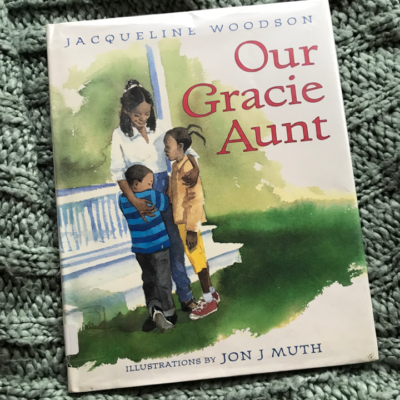
Johnson and Beebee must go live with their Aunt Gracie for a while. Their mother disappeared for too long and social services came. They get to visit their mother, but realize that being with Aunt Gracie is the best thing for them right now.
11. Alma and How She Got Her Name
Martinez-Neal, J. (2018). Alma and How She Got Her Name. Somerville, MA: Candlewick Press.

Alma’s name is too long. She asks her father why her name is so long. Her father explains each part of her name. Alma learns to love each part of her name and all that she is.
- Suggested Classroom Use: Introduce students to the interview process. Then have them go home and ask family members or have them predict the story of how they got their name. This is a great story to connect and compare with Thunder Boy Jr (see book below).
Alexie, S. Illus. by Yuri Morales. (2016). Thunder Boy Jr. New York: NY, Little Brown and Company.
Thunder Boy Jr. just wants a name of his own. He loves his dad, but wants to be his own person, his own name. After exploring different possible names, his dad chooses the perfect new name for Thunder Boy, Jr. (See Suggested Classroom Use above)
Myers, W. Illus. by Christopher Myers. (2009). Looking Like Me. New York, NY: Egmont.
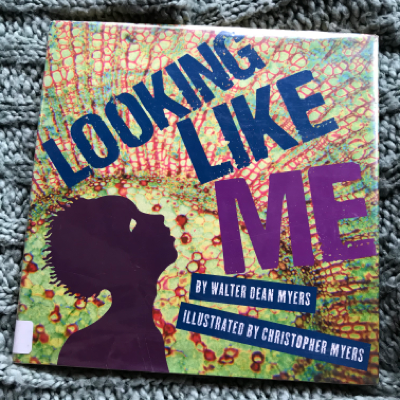
A poem to describe all that you are and can be. Walter Dean Myers takes a look inward and outward to see all of the things he is – son, writer, dancer.
- Suggested Classroom Use: This is a great book to use to get kids ideas started. They can start their own list of all the things they are. This list can be the starting point of ideas for writing a personal narrative.
Khan, R. Illus by Sophie Blackall. (2010). Big Red Lollipop. New York, NY:Viking.

Rubina is invited to a birthday. She is so excited, but her mother makes her take her little sister, Sana, along. Sana makes a fuss at the party and steals Rubina’s big, red lollipop. Later, Sana is invited to her first birthday party, but will she have to take the newest little sister along or will Rubina save her from the same experience.
Personal Narrative Picture Books with Videos:
Bookflix by Scholastic is a great resource to use with students. They have access to many Weston Woods productions. You can get a school subscription and it is also available with many public libraries. Below are two favorite personal narratives to use on Bookflix.
15. Knuffle Bunny (Weston Woods Video)
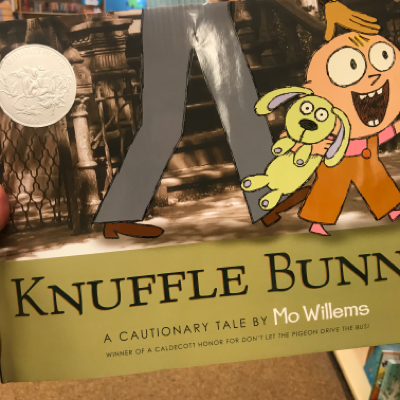
This book has a Weston Woods video companion. This is a great story to connect with kids who have had special toys or blankets. The young girl in this story learns that finding friends is about connecting with others.
16. Blackout (Weston Woods Video)
Rocco, John. (2011). Blackout. New York, NY: Disney Hyperion
A family finds the joy in losing power and finding time to spend together. When the lights go out this family finds that their neighbors have taken to the streets. People have disconnected from technology and they enjoy time with each other.
Epic eBooks Personal Narrative Mentor Texts:
Epic is another great resource to use in schools. Epic has access to many eBooks. This is a great option for whole group and guided reading groups. Students can access your Epic class using one-to-one devices. These can also be pulled up on the Promethean Board in the classroom to model your reading strategies.
Teachers and librarians can get access to a free account to use with students. Below are personal narrative books to use on Epic.
17. Dreamers
Morales, Yuyi. (2018). Dreamers. New York, NY. Holiday House.
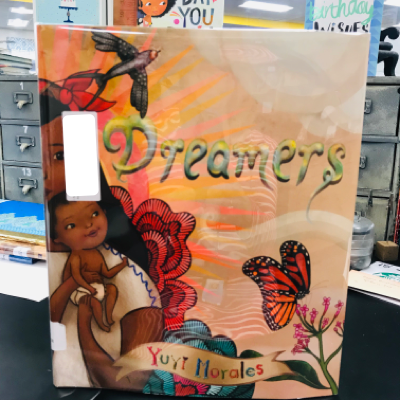
Dreamers is an autobiographical picture book about the author’s journey to America. The characters find solace in the children’s section of the San Francisco library. Dreamers relates to other books the author enjoys reading. This would be a great connection to other literature. It is also another outstanding option where there is both an English and Spanish version.
18. Jabari Jumps
Cornwall, G. (2017). Jabari Jumps. Somerville, MA: Candlewick.
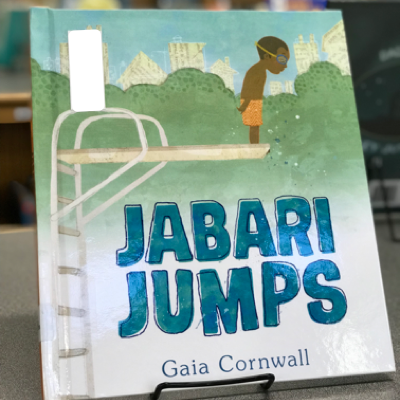
Jabari is finally ready to jump off the high dive for the first time. He is excited, but fear overtakes him and he begins to talk himself out of taking that big jump. Through a few tips from his father, he gains the confidence to overcome his fear and enjoy the surprise of not knowing what will come.
Tumble Books Library Personal Narrative Mentor Texts
Tumble Book Library also has some good resources. If you live in SC you can access these through the free virtual library SC DISCUS. (If you live outside of South Carolina, check with your library to see if you have access to a state virtual library.) Here are a few great personal narratives found on Tumble Books.
McGhee, Alison. Illus. by Peter Reynolds. (2008). Little Boy. Antheneum Books for Young Readers.
A simple book looking at the small things in a day and how so much depends on those simple things.
- Suggested Classroom Use: Use writing transformations to engage readers in getting ideas on paper. Read this article to learn more about transformations.
McQuinn, A. Illus. by Rosalind Beardshaw. (2006). Lola at the Library. Watertown, MA: Charlesbridge Books.
Lola loves Tuesdays. On Tuesday Lola and her mommy go to the library. Lola describes the things that happen at the library from checking out books, to tasting the foam from her mommy’s cappuccino.
- Suggested Classroom Use: Use this book to analyze the details found in a personal narrative. Create a list of the details from this book. Then have students go back to their personal narratives to see if there are specific details in their writing.
Barber, T., Barber, R. & Burleigh, R. Illus. by Barry Root. (2006). Teammates. New York, NY: Simon and Schuster.
Tiki struggled with holding the football when he was tackled. Through the right practice with his teammates, he learns a better way to hold the football and become a star receiver.
Personal Narrative Mentor Texts Discussion:
When spending money on collection development it is important to look at how it will benefit the majority of the community. Looking at the standards list at the end of this post, it is easy to see how updating the selection of personal narrative mentor texts will benefit everyone in an elementary school. I personally come from a middle class, white world. I can find myself in books and those stories make me feel as though I am not alone in my thoughts, actions and experiences in this world. I had models to use as I learned to write about my personal experiences. It is important that educators seek to find books that provide this support for all students. We must look beyond what we have always used and begin to start looking at what is new, current, and relevant to the lives of our students. (Standards that are met with this collection development are listed at the very end of this post).
To gather ideas on books to add to this collection development, I used a variety of selection tools. I began this search with my social media outlets. I have bookmarked Instagram posts, and saved Facebook posts. In addition, I used my Pinterest boards and searched for new ideas on this outlet as well. Once I compiled a list of books that I felt met the needs of my community, I went to the Children’s Core Collection database. From here, I was able to read reviews and evaluate the resource for quality and fit for the collection. I have found that reviews for Kirkus, Hornbook, and School Library Journal match the best for my needs and have yet to lead me astray in adding books to our collection. I like the reviews that give a “verdict.”
The biggest challenge was in making decisions that reached many in my community. I wanted to be sure that the stories would serve as both windows and mirrors for the students in the school. I wanted them to be ones where the kids were making connections to small moments in their lives. The books needed to be ones that could spark writing ideas for personal narratives.
Click here for more Writing Workshop ideas.

Personal Narrative South Carolina Standards Supported:
K5 Personal Narrative Standards
Standard 3: Write narratives to develop real or imagined experiences or events using effective techniques, well-chosen details, and well-structured event sequences.
3.1 Use a combination of drawing, dictating, and writing to narrate a single event or several loosely linked events, to tell about the events in the order in which they occurred, and to provide a reaction to what happened.
3.2 With guidance and support, plan, revise, and edit building on personal ideas and the ideas of others to strengthen writing.
1st Grade Personal Narrative Standards
Standard 3: Write narratives to develop real or imagined experiences or events using effective techniques, well-chosen details, and well-structured event sequences.
3.1 Explore multiple texts to write narratives that recount two or more sequenced events, include details, use temporal words to signal event order, and provide a sense of closure.
3.2 Plan, revise, and edit building on personal ideas and the ideas of others to strengthen writing.
2nd Grade Personal Narrative Standards
Standard 3: Write narratives to develop real or imagined experiences or events using effective techniques, well-chosen details, and well-structured event sequences.
3.1 Explore multiple texts to write narratives that recount a well-elaborated event or short sequence of events; include details to describe actions, thoughts, and feelings; use temporal words to signal event order; and provide a sense of closure.
3.2 Plan, revise, and edit, focusing on a topic while building on personal ideas and the ideas of others to strengthen writing.
3rd Grade Personal Narrative Standards
Standard 3: Write narratives to develop real or imagined experiences or events using effective techniques, well-chosen details, and well-structured event sequences.
3.1 Gather ideas from texts, multimedia, and personal experience to write narratives that:
a. develop real or imagined experiences or events using effective technique, descriptive details, and clear event sequences;
b. establish a situation and introduce a narrator and/or characters;
c. organize an event sequence that unfolds naturally;
d. use dialogue and descriptions of actions, thoughts, and feelings to develop experiences and events or show the response of characters to situations;
e. develop and strengthen writing as needed by planning, revising, and editing building on personal ideas and the ideas of others;
f. use temporal words and phrases to signal event order;
g. use imagery, precise words, and sensory details to develop characters and convey experiences and events; and
h. provide a sense of closure.
4th Grade Personal Narrative Standards
Standard 3: Write narratives to develop real or imagined experiences or events using effective techniques, well-chosen details, and well-structured event sequences.
3.1 Gather ideas from texts, multimedia, and personal experience to write narratives that:
a. develop real or imagined experiences or events using effective technique, descriptive details, and clear event sequences;
b. orient the reader by establishing a situation and introducing a narrator and/or characters;
c. organize an event sequence that unfolds naturally;
d. use dialogue and description to develop experiences and events or show the responses of characters to situations;
e. develop and strengthen writing as needed by planning, revising, and editing building on personal ideas and the ideas of others;
f. use a variety of transitional words and phrases to manage the sequence of events;
g. use imagery, precise words, and sensory details to develop characters and convey experiences and events precisely; and
h. provide a conclusion that follows from the narrated experiences or events
5th Grade Personal Narrative Standards
Standard 3: Write narratives to develop real or imagined experiences or events using effective techniques, well-chosen details, and well-structured event sequences.
3.1 Gather ideas from texts, multimedia, and personal experience to write narratives that:
a. develop real or imagined experiences or events using effective technique, descriptive details, and clear event sequences;
b. orient the reader by establishing a situation and introducing a narrator and/or characters;
c. organize an event sequence that unfolds naturally;
d. use dialogue, pacing, and manipulation of time to develop experiences and events or show the responses of characters to situations;
e. develop and strengthen writing as needed by planning, revising, and editing building on personal ideas and the ideas of others;
f. use a variety of transitional words, phrases, and clauses to manage the sequence of events; g. use imagery, precise words, and sensory details to develop characters and convey experiences and events precisely; and
h. provide a conclusion that follows from the narrated experiences of events
Standards available at https://ed.sc.gov/instruction/standards-learning/english-language-arts/support-documents-and-resources/ela-standards-by-grade-level/
Jessica,
I love the suggestions you make in this blog post. Actually, it is so visually appealing, I think you should make webinar on how to create a great blog. I would love to learn how!
I’m sure you got an “A” on this project!
Suzanne Spearman